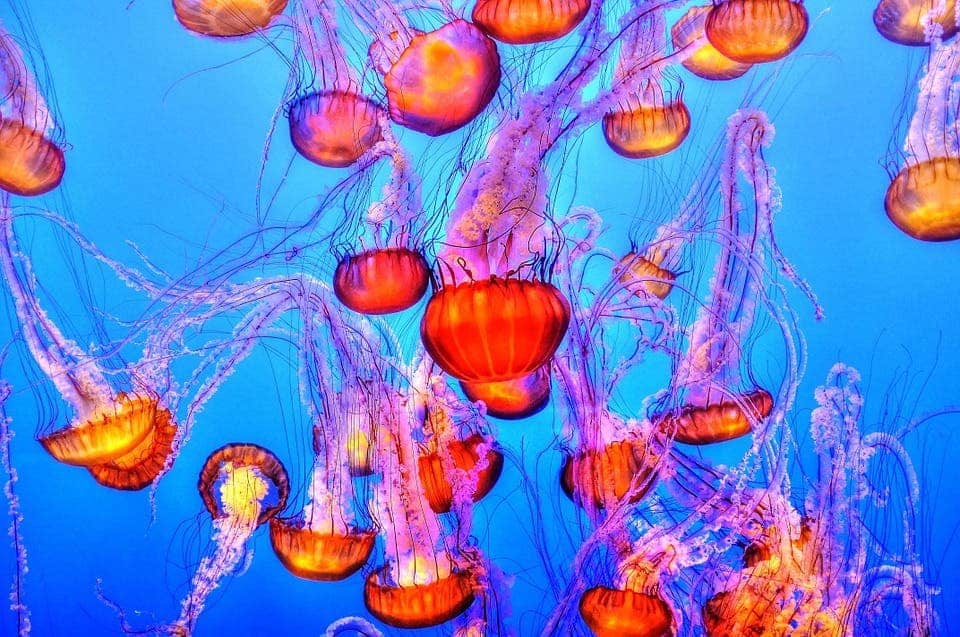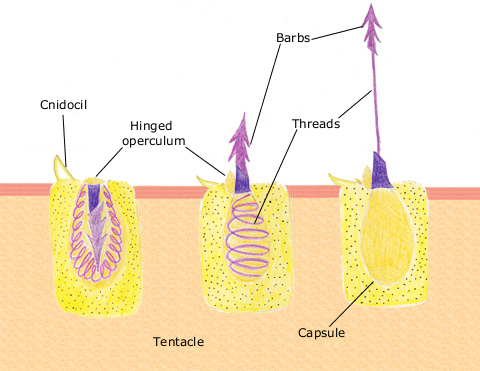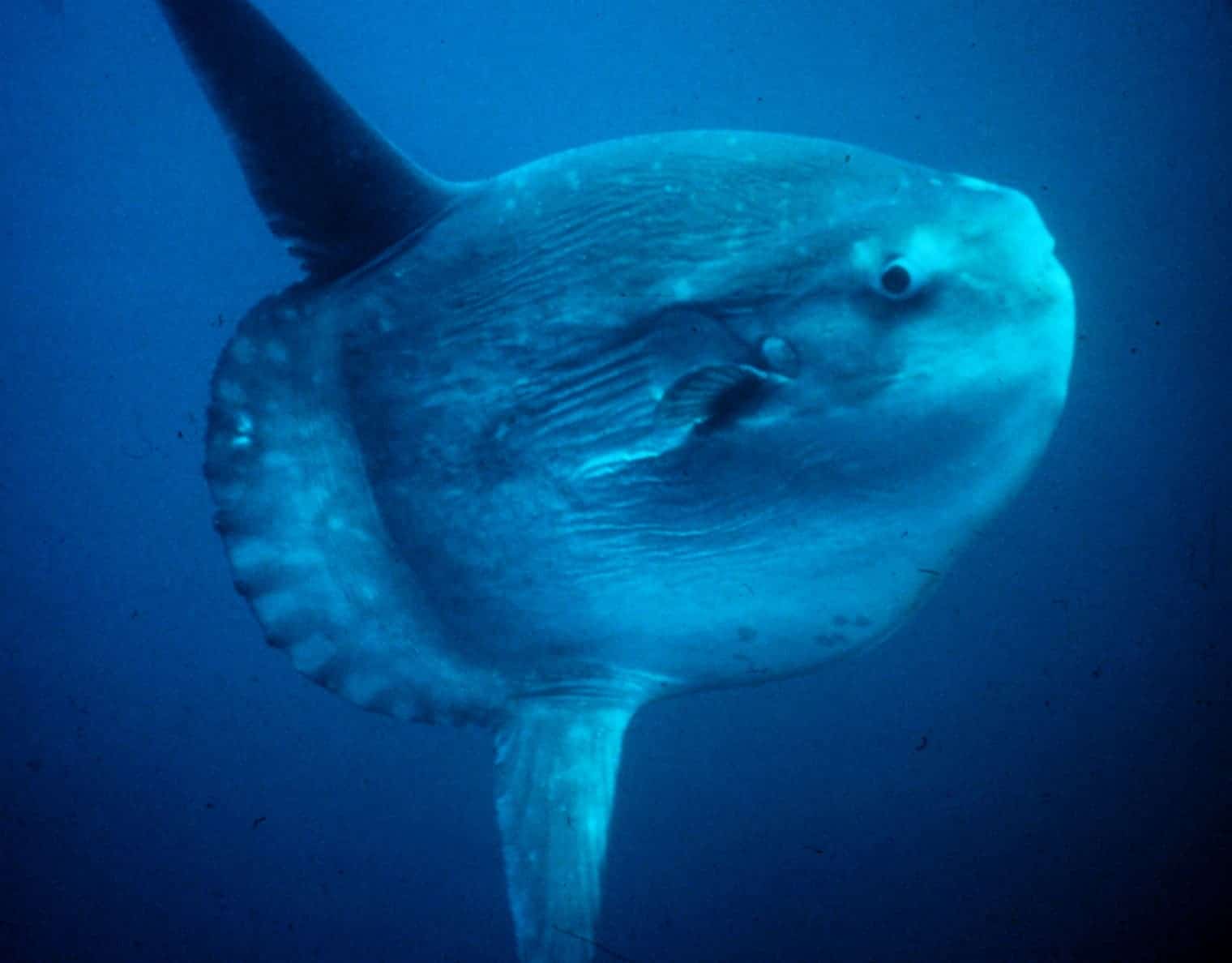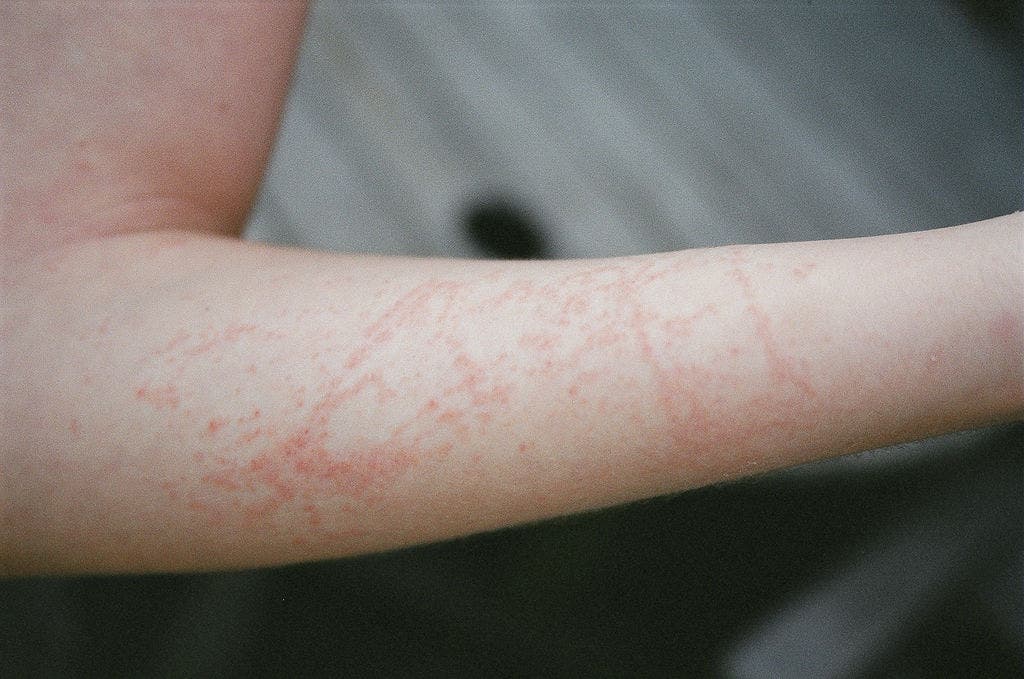Ah, beach holidays: sun, water, sand, jellyfish… jellyfish?! It’s true that jellyfish are one thing to watch out for when you are swimming in the ocean. They’re hard to see, quite often nearly transparent, and many species can give painful stings. These stings are used as a defence mechanism and for capturing prey— and they can be dealt with easily to minimize pain.

The “why” and “how”
The reaction is intended as a defense response and to capture prey. Jellyfish are carnivorous and use their stingers to capture algae, zooplankton, and crustaceans. Its tentacles contain the weapons used to immobilize prey. Each jellyfish tentacle is packed with thousands of cnidoblasts, which are cells that contain nematocysts. Think of nematocysts as little harpoons full of venom. Touch triggers them to shoot. The stinging thread at the tip of the harpoon inserts itself into the skin and injects venom. The venom is a neurotoxin, which is meant to paralyze prey but is still painful for humans. Jellyfish venoms are complex and contain porins, neurotoxins, and lipids. The porins tear holes in blood cells and trigger an inflammation response in mast cells (cells in the immune system responsible for allergies and anaphylaxis). Some proteins in the venom cause local pain and skin lesions.

Not every sting is equal
The amount of pain really depends on the species— some jellyfish have stronger venom and bigger cnidoblasts. Not all jellyfish have a painful sting. When swimming in a particular area it’s good to familiarize yourself with the types of jellyfish that can be found in that area to have an idea how toxic they are. In particular, look out for box jellyfish and Portuguese man-of-war— they are particularly dangerous. Even a tentacle that is not attached to a jellyfish can sting you. Jellyfish are more common in some months than others, such as in summer months when the water is warmer. Due to human-related changes to the ocean (such as overfishing, ocean warming, and pollution), jellyfish are thriving and increasing in numbers, so large blooms are becoming more common.
With these defences in place, it is hard to imagine that any animal would eat jellyfish. Well, as you would expect for a creature that is 98% water and has lots of stingers, it doesn’t have very many predators. In addition to a few other fish, the massive ocean sunfish and sea turtles eat jellyfish. They are immune to the stinging cells and can enjoy a nice jelly dessert.

If you get stung
Do not panic! Jellyfish stings are very rarely deadly. Okay, now that the not-panicking is out of the way, remove any tentacles that are still on the skin. Do not move much as moving can cause more venom to be released. Use tweezers, a knife, clean sticks or whatever is on hand (such as the edge of an ID or credit card) to remove the tentacles. You can also rinse it with seawater (NOT freshwater) to help get the tentacles off and reduce discomfort. If you happen to have some vinegar with you can pour it on the affected area, it deactivates the stinging cells of most jellyfish. The sting is alkaline so an acid like vinegar neutralizes it.

To relieve pain, you can immerse the stung skin in hot water as heat inactivates toxins. If pain persists, take a painkiller. If there are signs of an allergic reaction such as hives or trouble breathing, then call emergency health services.
Whatever you do, do NOT add fresh water, pee, meat tenderizer, or alcohol on the sting. When there are still pieces of tentacles, these actions either cause the nematocysts to fire more causing more pain, or at best, do nothing.
A Hawaii-based company has recently developed treatments to provide pain relief and even prevention for jellyfish stings. The main researcher involved, Angel Yanagihara, helped long-distance swimmer Diana Nyad to successfully swim from Havana to Key West in 2013. She had previously been prevented from this goal by the dangerous box jellyfish.
There is no reason to be more afraid of most jellyfish than you would be of a wasp or a bee. With the proper precautions, the risks and pain can be minimized and you can enjoy a relaxing vacation.






